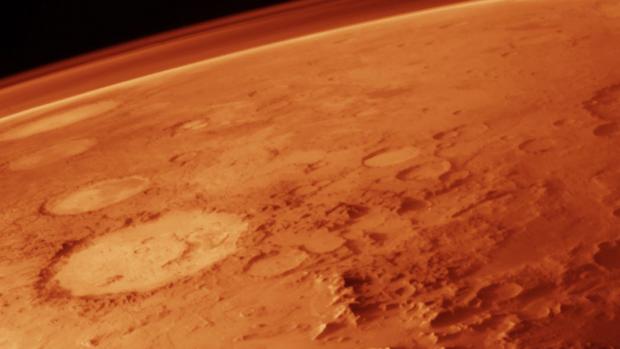Reaching For Mars: Engineering Design Course Inspires Area High School Students

Eight weeks ago Jack Yang of Ramapo, New Jersey, wanted to be a lawyer. Now the high school senior plans to be a mechanical engineer. Another senior, Kendall Coughlin, also sees herself pursuing a career in engineering, yet neither student had pictured being a scientist before signing up for Dr. Charles Camarda’s summer program on innovative conceptual engineering design. “I would’ve honestly pushed it aside if I hadn’t taken this course,” said Coughlin about her interest in engineering. Now she’s considering applying to NYU-Poly in the fall.
Coughlin and Yang’s reversals prove a point their instructor reminded students again and again: test your assumptions. “Our analysis is only limited by what we assume,” said Dr. Camarda, a NASA astronaut, engineer in residence at NYU-Poly, and alumnus of the Institute. “That’s the importance of going out in the laboratory: so that we understand our analysis is valid.”
His classes themselves were a kind of laboratory. Instead of presenting students with a problem that had already been solved by professionals, Dr. Camarda asked attendees to design a space suit for an astronaut traveling to Mars, a conundrum that designers at NASA are still wrestling with today. A parade of experts — Lawrence Kuznetz of NASA and Jeanette Yen of Georgia Tech, as well as Sven Bilen and Jack Matson of Penn State, for instance — joined Dr. Camarda over the course of seven weeks to prepare the students for their task. Lectures on biologically inspired design were paired with in-depth show-and-tell sessions: one memorable afternoon Don Rethke, a former engineer at Hamilton Sundstrand, drove 150 miles with 300 pounds of equipment used in space that he then shared with students, who learned how waste is disposed of in space, among other day-to-day dilemmas faced by astronauts. The students also visited MIT to see the latest in innovative space designs, as well as conducted classes held at NYU-Poly laboratories. “That’s not something I get to do every day in high school,” said Helen Luo, a senior who traveled from Queens weekly to attend Dr. Camarda’s course.
Another student, Jack Harihirin, agreed with her: “It [wasn’t] a conventional program.”
Both got to show off what they learned when they joined their classmates on August 19 at Pfizer Auditorium. There, the students gathered into the small teams to which they been earlier divided and which now competed against one another for best design of the space suit component they’d been assigned. “From engineers who’ve been in the business a long time, I expect incremental solutions,” said Dr. Andres Fortino, associate provost and dean at NYU-Poly’s Westchester campus and who sat on the panel of judges assessing the students. “From these guys, I expect leaps of imagination. They might not be totally practical but, if explored and made practical, could be breakthroughs.”
PowerPoint presentations proposing a range of solutions — space suit helmets with lateral movement (current space suits feature stationary helmets) or embedded microchips that feed astronauts with nutrients — were shown to the audience and judges, who gave the suggestion of wind-powered vehicles on Mars a thoughtful nod and who laughed when students offered space suit designs that factored attacks from alien invaders.
By the evening’s end, Team Ninja, which included Yang and Coughlin, had garnered top honors, which won them tickets to the next shuttle launch at Cape Canaveral. Among the revelers, Pritam Parmar beamed. Although his daughter wasn’t part of the winning team, he explained, “The first time they went to the moon, I was in India in eighth grade and I was listening on the radio — now my daughter is studying this stuff!”





